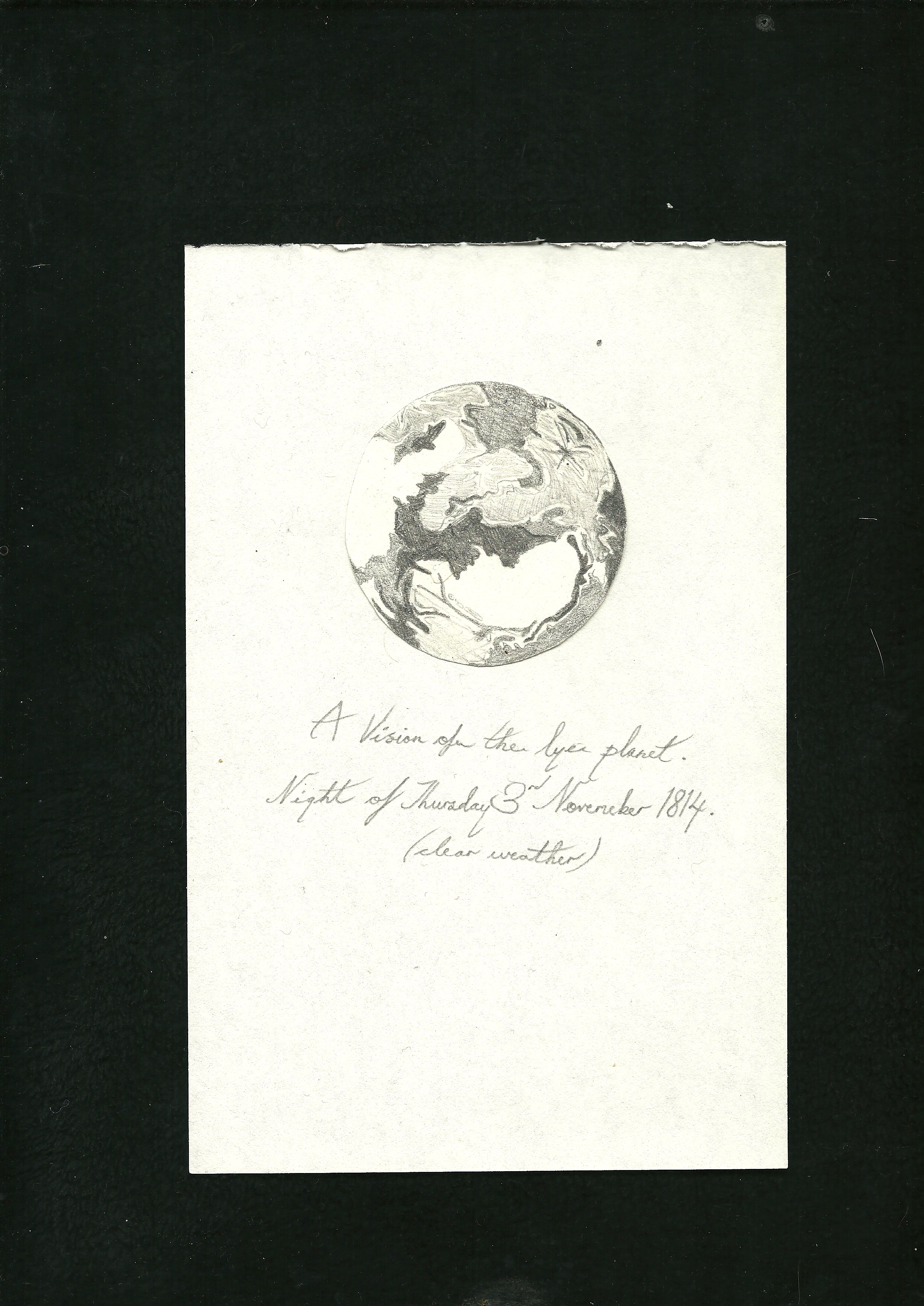
An early "vision" of the Lye Planet, drawn by the 3rd Lord Stumpstone (1764-1830). You can learn more about Stumpstone and the influence of his work on modern Lye Studies here.
Prof. Orem Homer
Department of Textual Studies (Sub-Department of Comparative Orthography)
Co-founder of the Lye Planet Research Unit

The pathways and weathered clay domes that mark the site of the last major settlement to perish on the Lye Planet were at first mistaken by the team for nothing more than shallow valleys and contours. Although no doubt strangely uniform, as noted in the log entry recording their initial sighting, still they were thought to be no different in essence from the landscapes of thousands of other barren rocks documented since the expedition had begun. In addition to this, the planet’s attributes did not correspond to the mission’s primary objective: specifically, to monitor exoplanets with the potential to harbour life in the present. Preoccupied with signs of water and familiar gases, the dry and inhospitable coldness of the Lye Planet and its moribund star were initially not investigated further. We should be grateful, in fact, that the planet’s so-called ‘natural features’ were revisited at all, and that a subsequent, more detailed overview of its geography from a closer vantage point was able to reveal to us the astonishing breadth of its former civilisations. For those researchers who had long maintained that the initial expedition’s narrow goals were misguided, the irony was not lost: how in our myopic, vampiric pursuit of the living, a reflection from another world had nearly passed us by entirely, the still remains of an ecosystem more extraordinary than any one of us could have foreseen.
The first expedition to the planet’s surface confirmed our wildest expectations: the Lye Planet was a once inhabited vast terrain, dotted with the vestiges of purpose-built, interconnected dwellings. It is now apparent, as was presumed at the time, that these communities persisted in some form until the planet’s sun started to cool. Exactly when and why this process began remains a matter of some contention, and nearly everything that we know for certain about the event comes not from scientific analysis, but from studies of the expedition team’s most remarkable discovery: vast quantities of artefacts, many created during the final epoch of civilisation, a period referred to by Lye academics as the Decline. The majority of these artefacts were found in near perfect condition, stored in vats filled with a liquid preservative. The decoding of a story they collectively tell of the end of their society, a gradual and anticipated event narrated from numerous perspectives over the course of many years, is the primary focus of our organisation, the Lye Planet Research Unit (LPRU).
Up to now, all studies of the Lye Planet and its artefacts have been carried out in total secrecy, and the launch of this website marks the first time we have brought our work as the LPRU to public attention. Rumours have periodically circulated in the scientific community, but thankfully gained little traction. One could say that the unprecedented nature of our research has worked to our advantage: some readers may well recall the vague, disbelieving references, passed from one faculty canteen to another, to a ‘planet of painters’ recently contacted in the outer reaches of the universe, and having laughed dismissively at such a prospect. The story is, of course, completely inaccurate, for while items which we might describe as pictorial or visually expressive feature among the Lye artefacts, it is certainly suspect to suppress the authorial and technical diversity of this body of work under the single reductivist term ‘painter’. That being said, its prescriptiveness is no doubt provocative, challenging us to think on what such a planet would look like; on how ‘alien oeuvres’ might correspond to those with which we are familiar; on the ways in which expression might manifest at all defined outside of our traditions, of known parameters and worlds. It is for these reasons that the discovery of the artefacts has stimulated more interest and discussion within the LPRU than any other research area. The study of other facets of Lye life has seemed impossible to start out on without the lens of their texts and images.
***
Next year, we hope to begin publishing the world's first journal dedicated to Lye Studies, and you can find excerpts from articles which will feature in the first edition throughout this webpage (the three paragraphs above are taken from my introduction). Until then, readers can consult our growing online catalogue of Lye artefacts, and subscribe to our Substack to keep informed on upcoming publications and events.